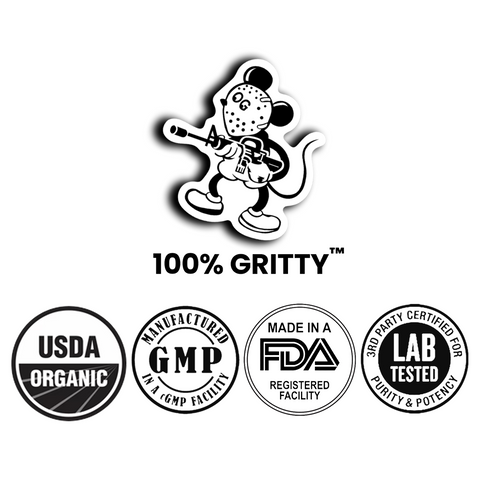Cannabidiol (CBD) has become a popular natural remedy for a variety of health issues. With the increasing demand for CBD products, consumers are presented with different types of CBD, including full spectrum CBD. In this article, we will focus on full spectrum CBD and what it is all about. We will explore the benefits of full spectrum CBD, the difference between full spectrum and other types of CBD, and how to use it effectively.
What is Full Spectrum CBD?

Full spectrum CBD refers to a CBD product that contains all the natural cannabinoids, terpenes, flavonoids, and other beneficial compounds found in the hemp plant. These compounds work together to produce an "entourage effect," where the therapeutic benefits of the plant are amplified.
The hemp plant contains over 100 different cannabinoids, including CBD, THC, CBG, CBN, and more. In full spectrum CBD, all of these cannabinoids are present, but the THC content is less than 0.3%, which is not enough to produce psychoactive effects.
In addition to cannabinoids, the hemp plant also contains terpenes, which are aromatic compounds that give the plant its unique scent and flavor. Terpenes also have therapeutic benefits and work synergistically with cannabinoids to produce the entourage effect.
Flavonoids, another group of plant compounds found in hemp, also contribute to the therapeutic benefits of full spectrum CBD.
It's important to note that the legality of full-spectrum CBD products varies depending on where you live.
In the United States, the 2018 Farm Bill legalized the cultivation of hemp and the production of hemp-derived products containing less than 0.3% THC. However, some states have stricter laws regarding CBD products, so it's essential to check the laws in your area before purchasing or using any CBD products.
Benefits of Full Spectrum CBD
The Entourage Effect: Full spectrum CBD produces an entourage effect, which means that all the compounds in the hemp plant work together to produce a more potent therapeutic effect than CBD alone.
Better Absorption: Full spectrum CBD is more easily absorbed by the body than isolated CBD. This is because the presence of other cannabinoids and terpenes helps to increase the bioavailability of CBD.
Longer Lasting Effects: Full spectrum CBD has longer lasting effects than isolated CBD. This is because the other cannabinoids and terpenes slow down the breakdown of CBD in the body, allowing it to stay in the system for longer.
More Effective for Certain Conditions: Full spectrum CBD has been found to be more effective than isolated CBD for certain conditions, such as chronic pain, anxiety, and depression.
Despite the potential benefits of full-spectrum CBD, it may not be suitable for everyone. Some people may be sensitive to certain compounds in the plant, such as THC.
Full Spectrum vs. Isolate:
Isolate CBD is a pure form of CBD that has been extracted from the hemp plant and purified to remove all other cannabinoids and plant compounds. While isolate CBD may be beneficial for some conditions, it lacks the entourage effect and may not be as effective as full spectrum CBD.
A study published in 2018 in the journal Molecules investigated the potential benefits of full-spectrum CBD oil. The researchers found that full-spectrum CBD oil provided greater relief from inflammation and pain compared to CBD isolate. They attributed this to the entourage effect, where all the compounds in the plant work together to enhance each other's effects.
In contrast, full spectrum CBD contains all the natural compounds found in the hemp plant, which work together to produce a more potent therapeutic effect. Full spectrum CBD is also more easily absorbed by the body and has longer lasting effects than isolated CBD.
How to Use Full Spectrum CBD:

There are different ways to use full spectrum CBD, including:
Sublingual: Place a few drops of full spectrum CBD oil under the tongue and hold it there for 30 seconds before swallowing. This method allows for quick absorption into the bloodstream.
Topical: Apply full spectrum CBD cream or lotion directly to the skin to relieve pain, inflammation, and skin conditions.
Edibles: Incorporate full spectrum CBD into food or drinks for a tasty and convenient way to consume CBD.
Incorporating Products Into Your Routine
If you're interested in incorporating full-spectrum CBD products into your wellness routine, Organic Grit offers a variety of options. Our full-spectrum CBD tinctures are made from high-quality hemp and contain a range of beneficial cannabinoids and terpenes. Our products are third-party lab tested to ensure quality and purity.
We also offer full-spectrum gummies, which provide a convenient way to incorporate CBD into your daily routine.
It's important to note that CBD affects everyone differently, and it may take some trial and error to find the right dosage and product that works best for you. We recommend starting with a low dose and gradually increasing as needed.
The Bottom Line
Full-spectrum CBD offers a range of potential health benefits due to the presence of multiple cannabinoids and terpenes working together to enhance each other's effects.
One thing to note is that Full-spectrum CBD may be more effective than CBD isolate for certain conditions.
Organic Grit offers a variety of full-spectrum CBD products that are made from high-quality hemp and third-party lab tested for quality and purity.
If you're interested in incorporating full-spectrum CBD into your wellness routine, we invite you to explore our selection of products and find the right one for you.
References:
Baron, E. P. (2018). Medicinal properties of cannabinoids, terpenes, and flavonoids in cannabis, and benefits in migraine, headache, and pain: an update on current evidence and cannabis science. Headache: The Journal of Head and Face Pain, 58(7), 1139-1186. doi: 10.1111/head.13345
Bonn-Miller, M. O., Loflin, M. J., Thomas, B. F., Marcu, J. P., Hyke, T., & Vandrey, R. (2017). Labeling accuracy of cannabidiol extracts sold online. Jama, 318(17), 1708-1709. doi: 10.1001/jama.2017.11909
DeLong, G. T., Wolf, C. E., Poklis, A., & Lichtman, A. H. (2010). Pharmacological evaluation of the natural constituent of cannabis sativa, cannabichromene and its modulation by Δ9-tetrahydrocannabinol. Drug and alcohol dependence, 112(1-2), 126-133. doi: 10.1016/j.drugalcdep.2010.05.019
Hanuš, L. O., Meyer, S. M., Muñoz, E., Taglialatela-Scafati, O., & Appendino, G. (2016). Phytocannabinoids: a unified critical inventory. Natural product reports, 33(12), 1357-1392. doi: 10.1039/c6np00074f
Hazekamp, A., & Fischedick, J. T. (2012). Cannabis‐from cultivar to chemovar. Drug testing and analysis, 4(7-8), 660-667. doi: 10.1002/dta.407
Jikomes, N., & Zoorob, M. (2018). The cannabinoid content of legal cannabis in Washington state varies systematically across testing facilities and popular consumer products. Scientific reports, 8(1), 1-9. doi: 10.1038/s41598-018-22755-2
Pamplona, F. A., da Silva, L. R., & Coan, A. C. (2018). Potential clinical benefits of CBD-rich cannabis extracts over purified CBD in treatment-resistant epilepsy: Observational data meta-analysis. Frontiers in neurology, 9, 759. doi: 10.3389/fneur.2018.00759
Russo, E. B. (2011). Taming THC: potential cannabis synergy and phytocannabinoid‐terpenoid entourage effects. British journal of pharmacology, 163(7), 1344-1364. doi: 10.1111/j.1476-5381.2011.01238.x
Russo, E. B. (2019). The case for the entourage effect and conventional breeding of clinical cannabis: no “strain,” no gain. Frontiers in plant science, 9, 1969. doi: 10.3389/fpls.2018.01969
Small, E. (2015). Evolution and classification of Cannabis sativa (marijuana, hemp) in relation to human utilization. The botany of desire: A plant's-eye view of the world, 187-200.







Comments (0)
There are no comments for this article. Be the first one to leave a message!